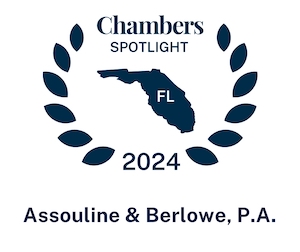Patent Prosecution
Assouline & Berlowe’s patent attorneys are licensed with the United States Patent and Trademark Office (USPTO) to prepare and prosecute patent applications. We are experienced working with companies, both large and small, and independent inventors, to protect their mental creations using case specific strategies of patent protection. Our goal is to provide clients with the right strategy for their intellectual capital by turning an idea into protected asset.
Assouline & Berlowe has prosecuted patents in wide ranging technologies, including electronic, biochemical, software, and the mechanical arts. A patent, specifically provided for in the U.S. Constitution, is a property right granted by the United States government to the inventor, typically for a term of 20 years from the filing of the application. In exchange for this monopoly, the inventor must disclose the invention to the USPTO, which eventually becomes available to the public.
There are three types of patents: utility, design, and plant patents. Utility patents protect a new and useful process, machine, article of manufacture, or composition of matter, or any new and useful improvement. Design patents protect any new, original, or ornamental design for an article of manufacture. Plant patents are granted to anyone who invents or discovers and asexually reproduces any distinct and new variety of plant.
Utility patents are further broken down into provisional patents and non-provisional patents. Under the first to file patent system in the United States, establishing a filing date fully disclosing the invention is critical. Filing a non-provisional patent application starts the clock with the USPTO for the examination process to determine whether the invention will issue into a patent. In certain situations, filing a provisional patent application before a non-provisional patent application is preferable as the filing requirements are not as strict. However, it is critical to note that a provisional patent application can never mature into a patent on its own. It acts as a placeholder with the USPTO. Within one year from filing the provisional patent application, the inventor must file a non-provisional patent application claiming the benefit of the previously filed provisional application.
Navigating the process of obtaining a patent with the USPTO can be quite complex. A patent application must not only disclose your invention but must also secure the novel features of your invention. At Assouline & Berlowe, our patent attorneys work with you to focus on the novel features of the invention to secure your intellectual property rights. We are well equipped to assess your invention and develop a strong patent strategy to properly protect your intellectual property.
 Assouline & Berlowe, P.A. Home
Assouline & Berlowe, P.A. Home




